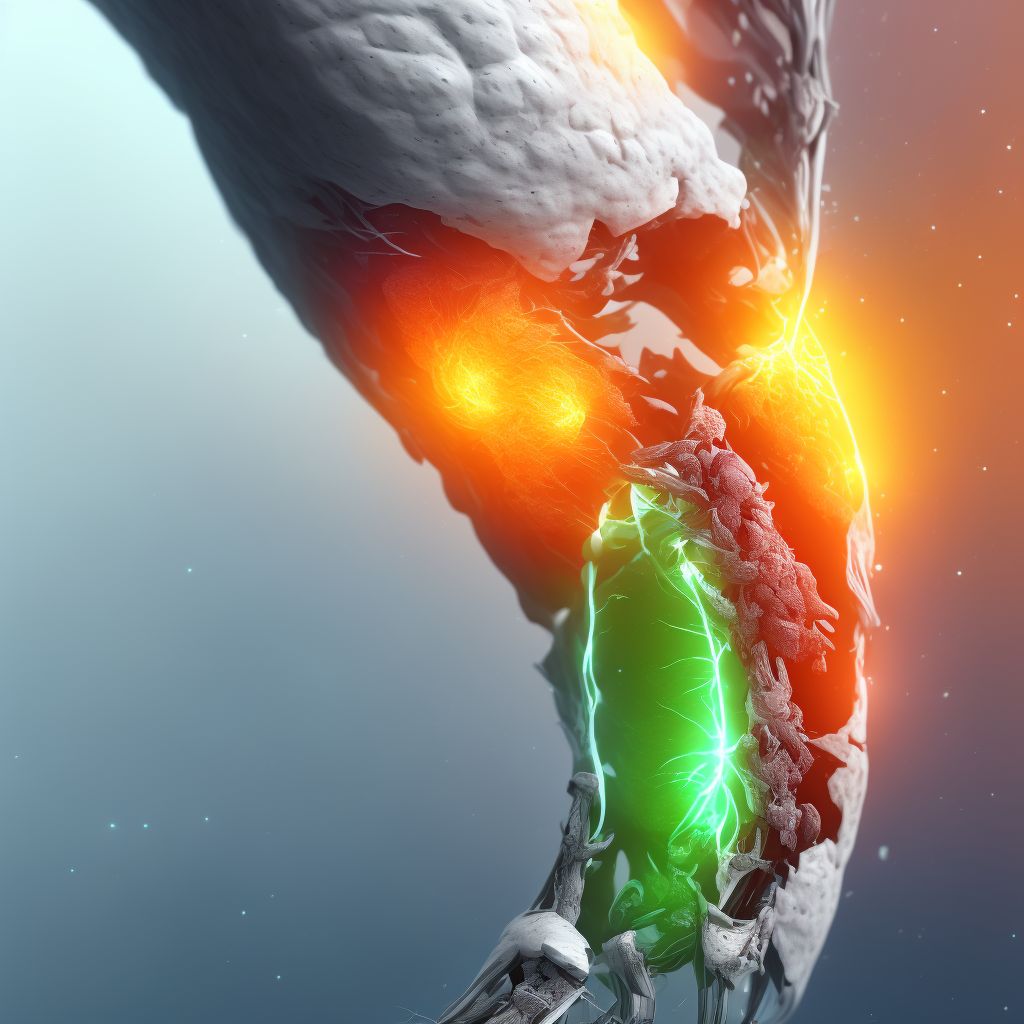
Displaced fracture of right tibial tuberosity, subsequent encounter for closed fracture with nonunion Save
ICD-10 code: S82.151K
Disease category: S82.151: Displaced fracture of right tibial tuberosity
Displaced Fracture of Right Tibial Tuberosity: Understanding the Condition
A displaced fracture of the right tibial tuberosity is a significant injury that requires prompt medical attention. This type of fracture occurs when there is a break in the tibial tuberosity, a bony prominence located at the top of the shinbone (tibia). When the fractured bone ends are no longer aligned, it is considered displaced.
Subsequent encounters for closed fractures with nonunion refer to follow-up visits for a fractured bone that has not healed properly. In the case of a displaced fracture of the right tibial tuberosity, nonunion can occur when the broken bone fails to heal despite appropriate treatment and immobilization.
It is essential to understand that this article does not provide information on treatment options for this condition. Instead, it aims to shed light on the nature of the injury and its subsequent encounter for educational purposes.
- Causes: Displaced fractures of the right tibial tuberosity can result from various factors, including direct trauma, falls, sports injuries, or motor vehicle accidents. These high-energy impacts can cause the bone to break and shift out of alignment.
- Symptoms: Individuals with a displaced fracture may experience severe pain, swelling, tenderness, and difficulty bearing weight on the affected leg. Additionally, bruising and deformity may be visible around the knee area.
- Diagnosis: To confirm a displaced fracture of the right tibial tuberosity, doctors typically rely on a thorough physical examination, medical history review, and imaging tests such as X-rays or CT scans. These diagnostic tools help assess the extent of the fracture and determine the best course of action.
- Complications: If left untreated, a displaced fracture with nonunion can lead to long-term complications, such as chronic pain, limited mobility, and joint stiffness. Seeking appropriate medical care and following recommended treatment plans are crucial to avoid these potential issues.
- Prevention: While it may not always be possible to prevent displaced fractures, individuals can take certain precautions to minimize the risk. These include wearing protective gear during sports activities, maintaining a healthy lifestyle to strengthen bones, and being cautious in potentially hazardous environments.
In conclusion, a displaced fracture of the right tibial tuberosity is a serious injury that requires medical attention. Subsequent encounters for closed fractures with nonunion involve follow-up visits to monitor and address a fracture that has not healed properly. If you suspect you have such an injury, it is essential to consult a healthcare professional for a proper diagnosis and appropriate treatment.
Treatment of Displaced fracture of right tibial tuberosity, subsequent encounter for closed fracture with nonunion:
Treatment Options for Displaced Fracture of Right Tibial Tuberosity, Subsequent Encounter for Closed Fracture with Nonunion
If you have been diagnosed with a displaced fracture of the right tibial tuberosity, subsequent encounter for closed fracture with nonunion, it's essential to understand the available treatment options. This type of fracture occurs when the bony prominence on ...
To see full information about treatment please Sign up or Log in